Low-carb diet plan — explained by Simple’s experts

Low-carb diets — diets that restrict carbohydrates and instead focus on fats and proteins — have been around for a LONG time. A very long time — the Atkins diet, for example, was popularized in the 1960s.
Of course, between new science and our own (pretty awesome) research, we’ve learned a lot since then.

To help you navigate everything you need to know about low-carb diet plans, from the different types to health benefits and foods to avoid, we’ve put together this low-carb diet plan guide.
Keep reading for the simple take on this longtime practice — and to see if going low carb is right for you.
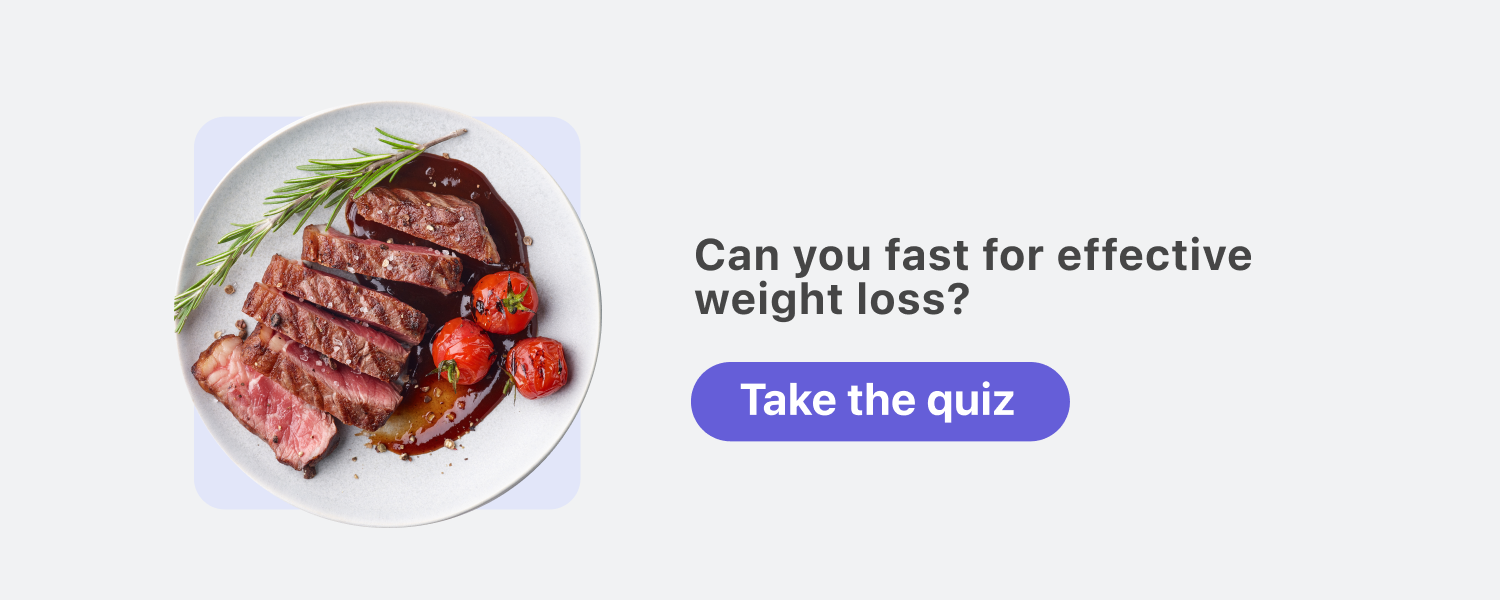
What is a low-carb diet?
TL;DR: A low-carb diet is all about limiting the amount of carbohydrates you eat.
While it depends on your body and goals, this generally means eating between 50 and 130 grams of carbohydrates per day. In other words, less than 26% of your energy intake should come from carbohydrates (while the remaining energy should come from fats and protein).
Before we dive in, let’s put on our lab coats and explore the types of carbs there are.
You’ve probably heard people talk about complex and refined carbs, but let’s dig a little deeper since “carbs” don’t just come from bread and pasta — though those are definitely some of the tastiest.
– You’ll find simple natural carbs from lactose in milk and fructose in fruit.
– Simple carbs include the really delicious sugar you put in your coffee or baked goods. (Yum!)
– Complex carbs can either be from:
- Whole-food sources like whole grains and beans
- Refined sources like white flour and white rice
But not all carbs are created equal. In fact, you actually digest different carbs at different rates — and some carbs impact your blood sugar differently than others.
In short, simple carbs, like cookies, cake, candy, and sodas, are digested faster than complex ones. They also can cause your blood sugar to spike. (Hello, sugar rush!) Complex carbs (especially from whole foods) have less of an effect on your blood sugar, take longer to digest, and often include gut-health-friendly fiber.
How does a low-carb diet work?
Let’s get science-y for a second: Your body uses carbs as an energy source. When you eat, carbs are broken down into simple sugar (called glucose) and released into your blood. Then, your body releases insulin to help that glucose enter your cells, where it’s used for energy.
“A lower carbohydrate intake is associated with smaller glucose peaks and therefore a gentler insulin response which can lead to overall improved glycemic, or blood sugar, control,” adds our Chief Nutrition Officer Ro Huntriss (Registered Dietitian, BSc, PGDip, MSc, MRes).
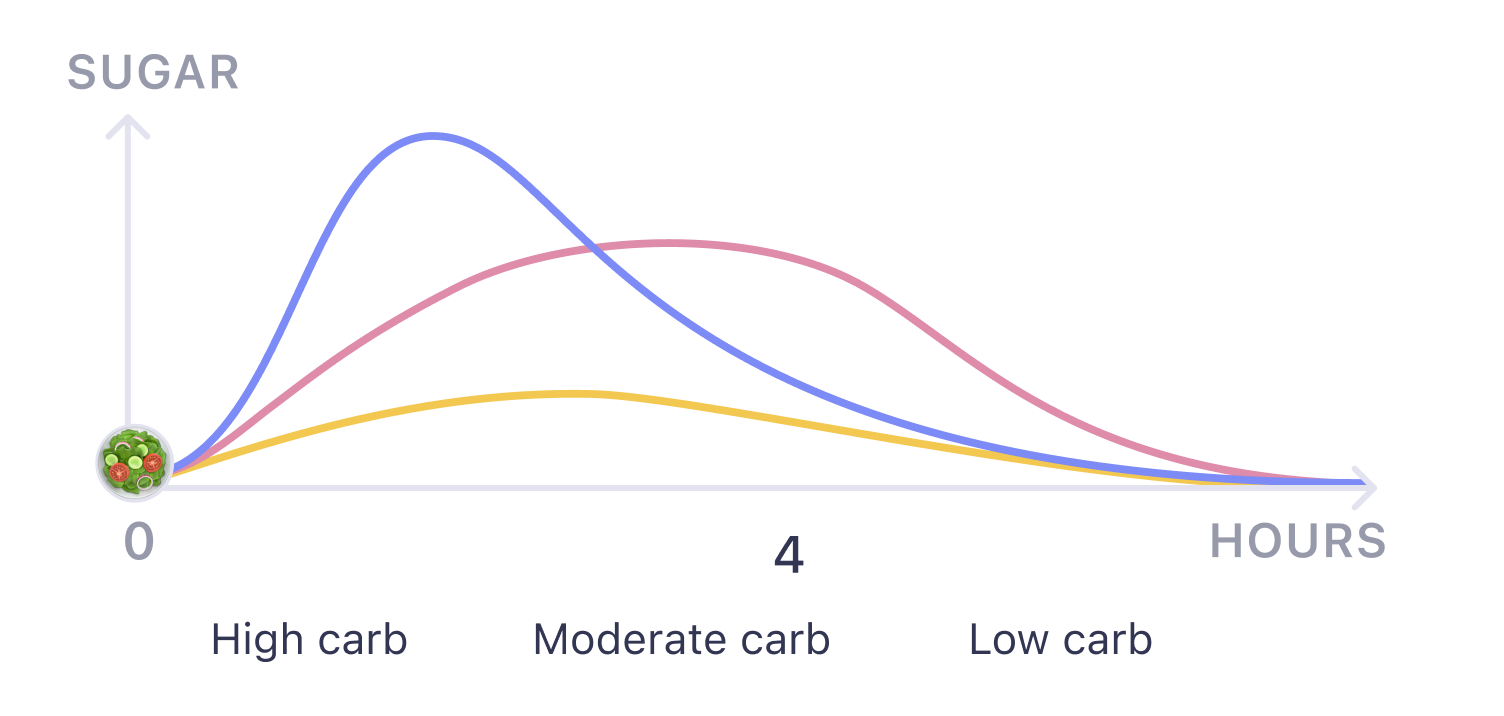
But here’s the tricky part: If you have excess glucose, your insulin will work harder to clear this from your bloodstream, storing it for later as fat. Excess insulin can also stop our body from properly burning fat. By following a low-carb diet, there is less excess glucose to be stored as fat, and our bodies are better able to use fat for fuel, which can lead to weight loss.
The different types of low-carb diets
- A basic low-carb diet: This diet recommends between 50 to 130 grams of carbs per day, depending on your body type.
- The Atkins diet: This structured plan has four phases, beginning with very low-carb consumption and then gradually introducing more carb-rich foods.
- The keto diet: This strict diet plan recommends you eat fewer than 50 grams of carbs per day and increase your fat intake significantly — getting 55%–60% of your daily calories from fat.
- Low-carb paleo diet: The paleo diet focuses on eating whole and unprocessed foods and limiting grains. While it isn’t necessarily a low-carb diet, you can limit your carb intake as part of your diet.
- The Whole30 diet: Whole30 focuses on eliminating big food groups, like grains, legumes, dairy, added sugars, alcohol, and desserts. While it isn’t necessarily a low-carb diet, you can choose to limit your carbohydrate intake as well.
- The Dukan diet: This includes four phases of dieting, two for weight loss and two for maintenance. Phase one focuses on high-protein foods, phase two adds vegetables back in, and phase three allows for two free or celebration meals per week. The final phase is about maintaining your new weight.
- The South Beach diet: This is a strict diet plan that cuts most carbs from your diet, including bread, pasta, rice, and even fruit. Instead, you’ll focus on lean proteins and soy products.
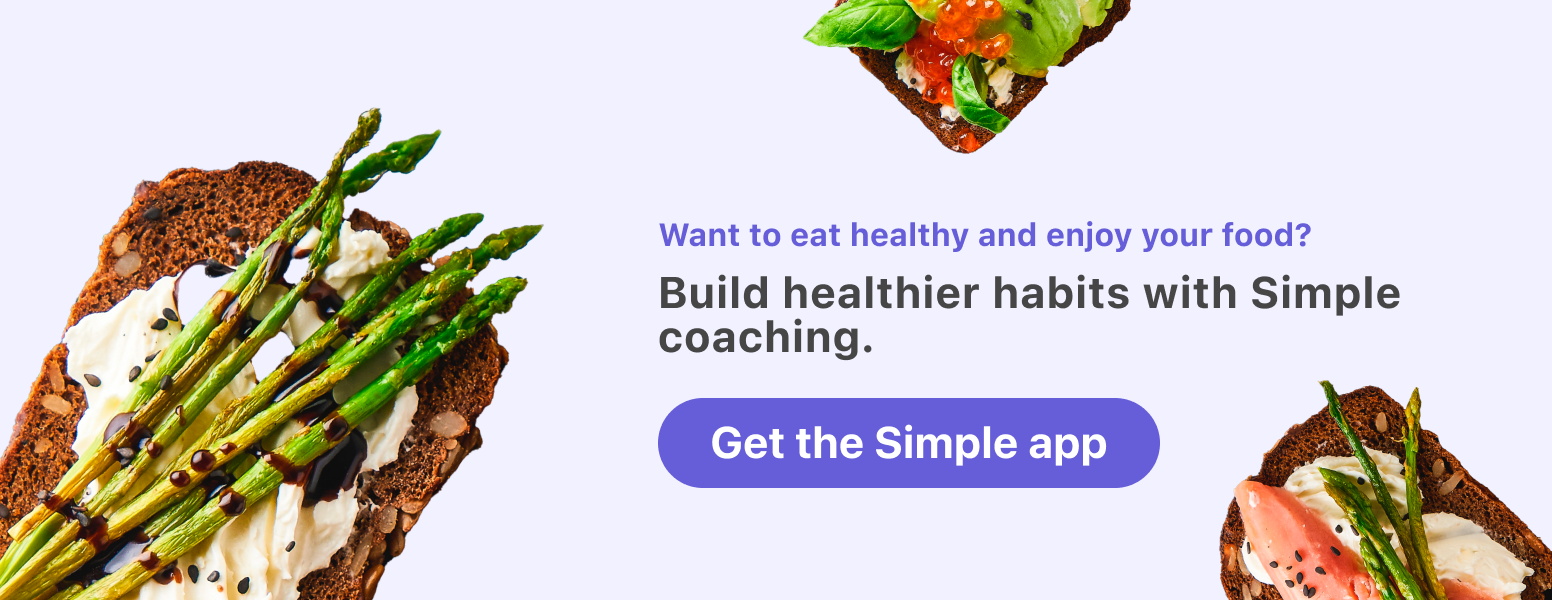
A low-carb diet plan and schedule
Unlike intermittent fasting, a low-carb diet doesn’t have any limitations on when you can eat, just what you’re eating. So feel free to eat breakfast, lunch, dinner, snacks, and even dessert, as long as you’re paying attention to your carb count.
If you’re wondering how to do a low-carb diet food-wise, we have a whole blog post about low-carb recipes, including zucchini lasagna rolls, a Greek salad egg bake, and even peanut butter sandies. You can also find more recipes in the Simple app. Get started (and get lots of personalized content) by taking the quiz here.
Before you start your low-carb diet plan, check in with a medical professional to determine a carb allowance that works for your body, lifestyle, and goals.
Foods to eat on a low-carb diet
- meat, like beef, pork, lamb, game, and poultry (that includes skin if you’d like it, and who doesn’t?)
- fish and seafood of all kinds
- eggs
- natural fats, like coconut oil and olive oil
- above-ground vegetables, like asparagus, bok choy, broccoli, Brussels sprouts, cabbage, cauliflower, cucumbers, eggplant, mushrooms, tomatoes, and zucchini
- lettuce and other leafy greens, like spinach and collard greens
- dairy products, like butter, sour cream, yogurt, and high-fat cheeses
- nuts and seeds
Foods to avoid on a low-carb diet
- sugar (soda, candy, juice, chocolate, cake, ice cream, etc.)
- starches (like flour) and cereal grains (like pasta and crackers)
- potatoes and sweet potatoes
- rice
- beans and lentils
- wine, beer, and anything made from grains
- fruit (though you can enjoy fruit in moderation)
Keep in mind that there are a lot of sneaky packaged foods that might be labeled as “low carb” but aren’t. Your best bet is to eat minimally processed foods and only ingredients you can pronounce.
Health benefits of the low-carb diet

Weight loss
If you’re looking to lose weight, trying a low-carb diet can absolutely help. While it’s not guaranteed, reducing the amount of carbs in your diet may help you drop pounds and reduce your waist circumference.[4]
Better sleep
Sleep efficiency can be defined as the percentage of time you spend asleep relative to your total time in bed. (So, for example, if it takes you an extremely long time to fall asleep at night and then you only sleep a few hours, you aren’t very sleep efficient). According to a 2021 study, there is a trend toward better sleep efficiency for those with a lower intake of carbohydrates.[5] What’s more, whole grains and fruits are linked to reduced incidents of insomnia.[6]
It may improve cholesterol levels
Studies found that low-carb diets can have a positive effect on triglycerides and HDL cholesterol concentrations.[7]
It may improve blood sugar in those with type 2 diabetes
For those with type 2 diabetes, eating a low-carb diet can improve glucose levels. It can also improve insulin sensitivity.[7] (Someone who’s insulin sensitive needs smaller amounts of insulin to lower their blood glucose levels than someone with a lower sensitivity.)
Health risks of the low-carb diet
Uncontrolled ketosis
If you eat too few carbs, you can risk going into ketosis (when you cause your body to break fat down into ketones for energy). This can cause fatigue, headaches, nausea, and constipation, which generally pass after a week or so. Ketosis can be beneficial for weight loss when done safely.[8] However, for those with diabetes, this can cause hypoglycemia and ketoacidosis, which can be life-threatening.
Possible side effects like constipation and cramps
Some people, when they’re reducing carbs, also lose out on important gut-loving fiber. This can cause constipation and cramps. If you go low-carb, make sure you’re still getting between 25 and 38 grams of fiber per day (from things like legumes, seeds, and nuts) to help keep you regular.[9]
Pros and cons of a low-carb diet
| Pros | Cons |
| No time restrictions for eating | Restrictive |
| No calorie counting | Requires carb counting |
| Dessert is not off-limits | No guaranteed results |
| May help with weight loss | Harder to meet fiber needs |
| Doesn’t require specialty (expensive) ingredients | Difficult to dine out |
Pros
Low-carb diets don’t require any time constraints for when you eat. So, if you need that midnight snack, go for it. And even dessert isn’t off limits, as long as you’re watching your carbs. What’s nice is that you don’t have to count calories, either, which can be a bit more complicated.
We love that low-carb diets don’t require any specialty ingredients to get started.
Cons
Let’s face it: any diet can be tricky, especially if you’re really trying to overhaul your daily habits (or your family’s). Low-carb diets can be restrictive and difficult to achieve if you’re a social butterfly and have lots of parties and dinners to attend. (RIP dinner rolls and beer.) Plus, there’s no guarantee you’ll lose weight over the long term.
If you’re realizing that your love of pasta is too strong and low carb isn’t for you, though, no worries. You’ve got options! Intermittent fasting is one. If you’d like a hand figuring out fasting, take our Simple quiz.
Is a low-carb diet right for you?
Most people can start a low-carb diet, but you should do some prep or consult your doctor if you have diabetes,[10] take medication for your diabetes or hypertension, or are currently breastfeeding or pregnant. If you’ve been diagnosed with an eating disorder or are underweight, a low-carbohydrate diet is not recommended.
5 tips to get started on a low-carb diet
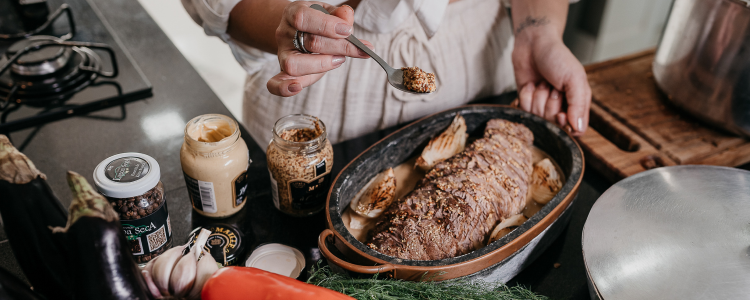
- Any change to your diet can be tricky; that’s why we recommend learning how to meal plan, which can take the guesswork out of your daily meals. Bonus: It can also save you money and reduce food waste. Huzzah!
- If you’re not fully ready to jump into a strict low-carb diet plan but are still interested in burning fat, start with swapping pastries, white bread, and breakfast cereal for quinoa, oats, beans, and lentils. You can read more about burning fat effectively here.
- Get in the habit of checking nutrition labels on the back of your favorite foods. They might surprise you. (Or pleasantly surprise you!)
- If you’re trying to lose weight, keep an eye on your intake of high-calorie foods, like cheese, because it’s easy to overeat.
- Craving something sweet? Try dark chocolate with over 70% cocoa. That should satisfy your sweet tooth without giving you a sugar rush.
Frequently asked questions about a low-carb diet
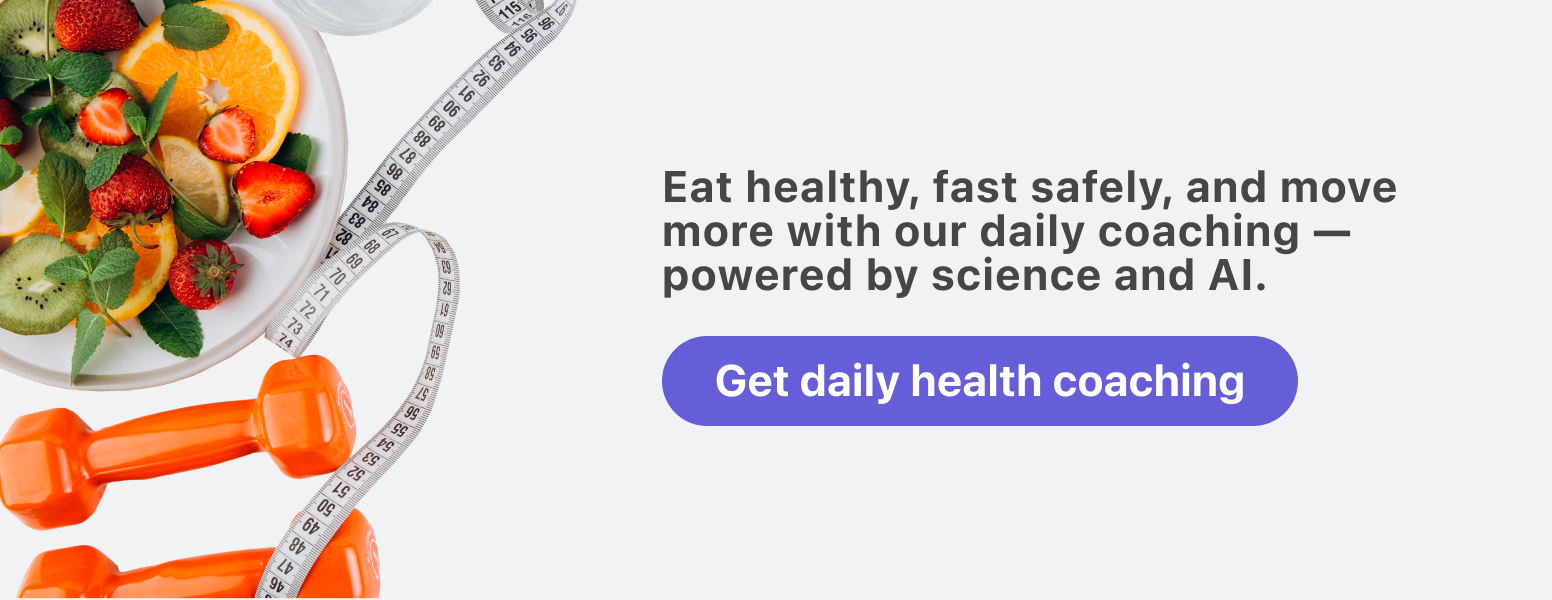
- Foley PJ. Effect of low carbohydrate diets on insulin resistance and the metabolic syndrome. Curr Opin Endocrinol Diabetes Obes. 2021 Oct 1;28(5):463–8.
- Willems AEM, Sura-de Jong M, van Beek AP, Nederhof E, van Dijk G. Effects of macronutrient intake in obesity: a meta-analysis of low-carbohydrate and low-fat diets on markers of the metabolic syndrome. Nutr Rev. 2021 Mar 9;79(4):429–44.
- Amanda. Top 17 low-carb and keto controversies – [Internet]. Diet Doctor. 2016 [cited 2023 May 24].
- Chawla S, Tessarolo Silva F, Amaral Medeiros S, Mekary RA, Radenkovic D. The Effect of Low-Fat and Low-Carbohydrate Diets on Weight Loss and Lipid Levels: A Systematic Review and Meta-Analysis. Nutrients [Internet]. 2020 Dec 9;12(12).
- Benton D, Bloxham A, Gaylor C, Young H. Influence of Carbohydrate on the Stages of Sleep – A Meta-Analysis. Curr Dev Nutr. 2021 Jun 7;5(Supplement_2):896–896.
- Gangwisch JE, Hale L, St-Onge MP, Choi L, LeBlanc ES, Malaspina D, et al. High glycemic index and glycemic load diets as risk factors for insomnia: analyses from the Women’s Health Initiative. Am J Clin Nutr. 2020 Feb 1;111(2):429–39.
- Meng Y, Bai H, Wang S, Li Z, Wang Q, Chen L. Efficacy of low carbohydrate diet for type 2 diabetes mellitus management: A systematic review and meta-analysis of randomized controlled trials. Diabetes Res Clin Pract. 2017 Sep;131:124–31.
- Crosby L, Davis B, Joshi S, Jardine M, Paul J, Neola M, et al. Ketogenic Diets and Chronic Disease: Weighing the Benefits Against the Risks. Front Nutr. 2021 Jul 16;8:702802.
- Fibre and whole grains [Internet]. Heart and Stroke Foundation of Canada. [cited 2023 May 24].
- Complications of diabetes [Internet]. Diabetes UK. 2018 [cited 2023 May 24].
- Yang Q, Lang X, Li W, Liang Y. The effects of low-fat, high-carbohydrate diets vs. low-carbohydrate, high-fat diets on weight, blood pressure, serum liquids and blood glucose: a systematic review and meta-analysis. Eur J Clin Nutr. 2022 Jan;76(1):16–27.
- Mancini JG, Filion KB, Atallah R, Eisenberg MJ. Systematic Review of the Mediterranean Diet for Long-Term Weight Loss. Am J Med. 2016 Apr;129(4):407–15.e4.
